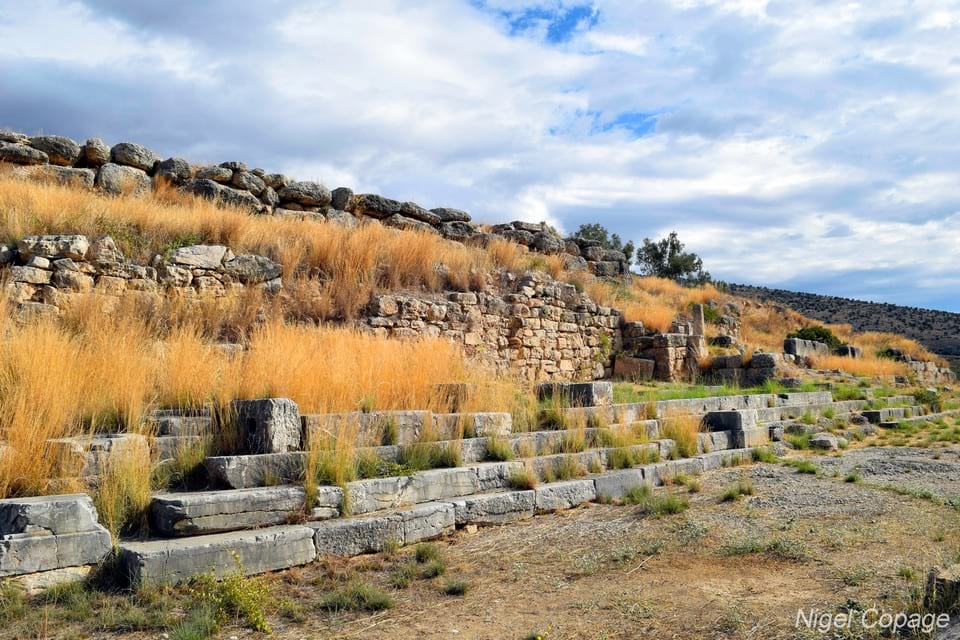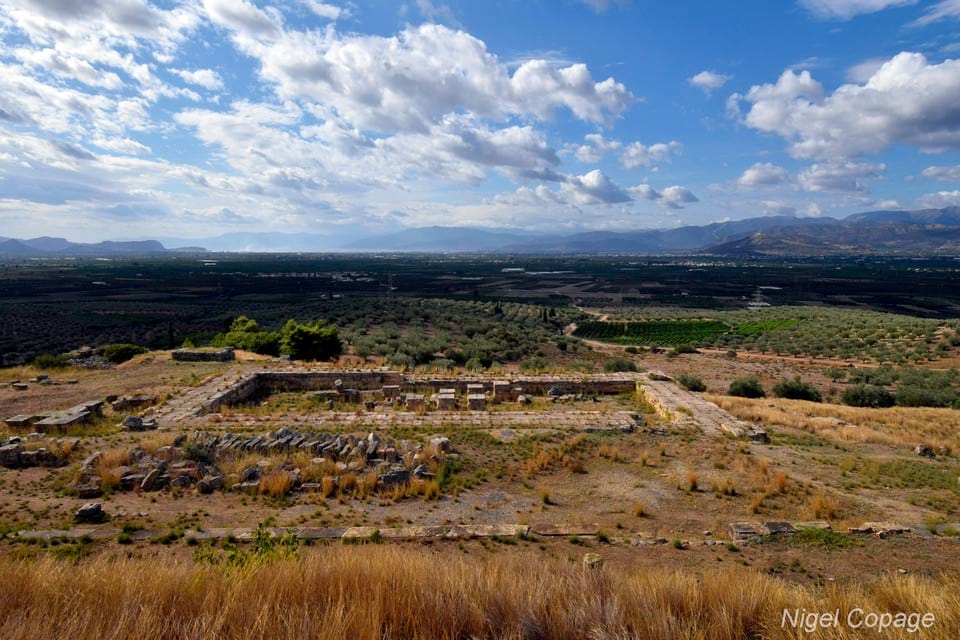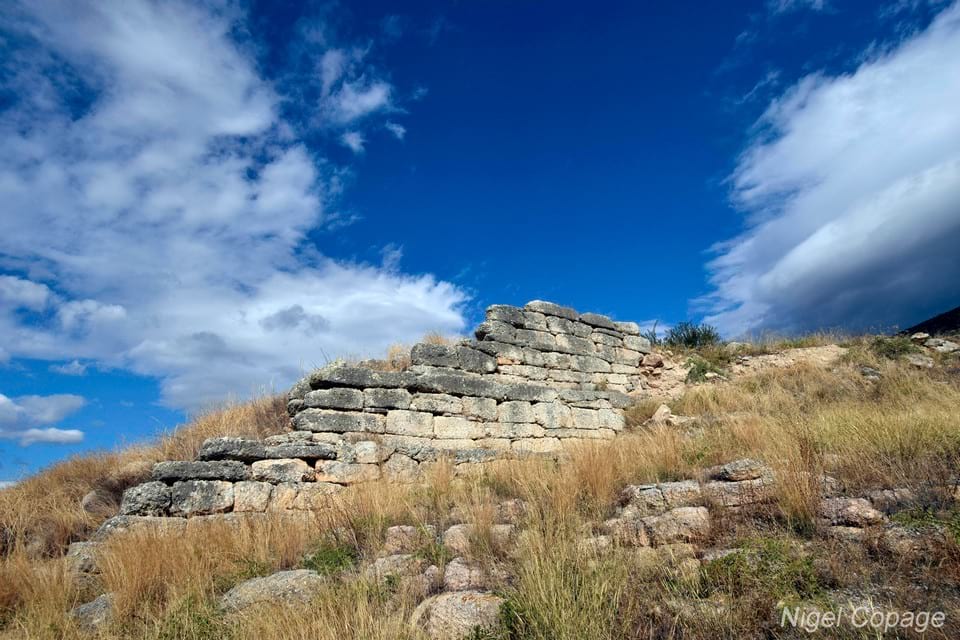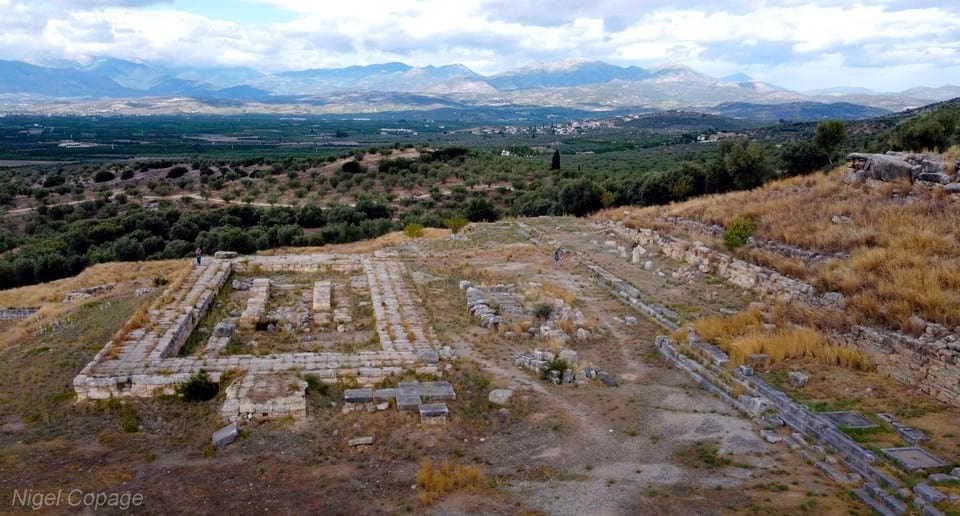
Dating from the 8th century BC, the Heraion is a temple dedicated to the goddess Hera and is located 8km Northeast of Argos and just 3 km Southeast of Mycenae. It was the largest such sanctuary in the Argolida and may well have been the first in mainland Greece to worship this deity. Situated among several ancient communities including Tiryns, Midea, Mycenae the sanctuary was most closely associated with Argos and in time became its main religious centre. The earliest finds at the temple site date to the Geometric period but the Heraion expanded during the Archaic period and reached its heyday in the classical era. It remained in use throughout the Roman period.
Mythology
Hera was the most venerated goddess in this part of Greece and it is possible that the cult of her worship originated at the Heraion. Perhaps best known as the wife of Zeus, Hera is important in her own right as one of the twelve Olympians and as the goddess of marriage, family and childbirth. She is also closely associated with the city of Argos, her epithet being “Hera Argive”. She is also mentioned in the Iliad as saying “The three towns I love most are Argos, Sparta and Mycenae”.
Legend has it that it was at the site of Heraion that Agamemnon was elected to lead the expedition to Troy and it was here he swore his oaths. According to mythology the Heraion was constructed many generations before the destruction of Troy in the 13th century BC. But no archaeological evidence has been found which supports this as the earliest findings are from the Geometric period.
History
The Heraion was built on the lower slopes of the Euboea (Evia) mountain range also known as Aetovouno (Eagle mountain). The area is known to have been inhabited since the 3rd millennium BC and a number of tombs have been found which date to the Mycenean period, in particular the cave burials at nearby Prosymna.
The sanctuary was one of a number of cult centres which were founded towards the end of the ninth century BC along with others such as Delphi, Delos and the Acropolis at Athens. It was surrounded by several communities including those of Mycenae, Tiryns, Midea and Argos. Although it seems the site was originally shared it gradually came under the control of Argos and an 8km road was constructed which connected Argos directly with the Heraion.
The sanctuary occupies three man-made terraces on the mountain slope with the original temple on the uppermost terrace. This was built between 625 and 600 BC and was of peripteral style which is to say that it had a single row of columns around the outside. Both the Greek historian Thucydides and the chronicler Pausanias report that this first temple was burnt down in 423 BC when the priestess Chrysis (Khryseis) fell asleep and her flaming torch set fire to some garlands.
Following this disaster a new temple was constructed on the middle terrace. This housed a huge chryselephantine (ivory) statue of Hera which was still in place when Pausanias visited in the second century AD.
The Heraion is associated with an important panhellenic festival. Originally called the Hekatomboia (named after the 100 oxen which were sacrificed) the games were later renamed as “The Heraea” and were held every 4 years, in the second year of each Olympiad. Events included athletics and musical contests as well as a magnificent procession. In the middle of the third century BC the games were moved to Argos where a new stadion had been constructed (at the same time the Nemean games were also transferred to Argos).
The Heraion remained an important centre of worship throughout the Roman era and the emperors August, Nero and Hadrian made dedications (in the case of Nero a golden crown and a purple robe while Hadrian offered a golden peacock). Some parts of the site appear to have been replaced or renovated during the Roman period.
At the end of the 4th century AD strict laws were introduced which forbade pagan worship and other non-christian practices so if the Heraion was still in use at this time it would have been closed down.
Excavations
The site of the Heraion was rediscovered in 1831 by the British army officer General Thomas Gordon who made some preliminary investigations a few years later.
The first systematic excavations took place between 1892 and 1895 and were conducted by the Archaeological Institute of America under the leadership of Sir Charles Waldstein and between 1925 and 1928 under Blegen. The Heraion was the very first excavation made in Greece by the institute which reflects the importance it was given.
Later excavations took place in collaboration with the French and American archaeological schools and these determined that the Heraion was over the site of acropolis of the Mycenean settlement of Prosymna.
Click here for information on tickets, opening hours etc








